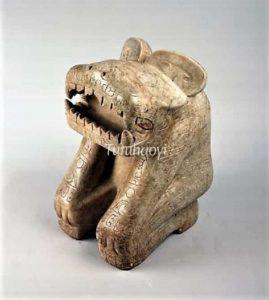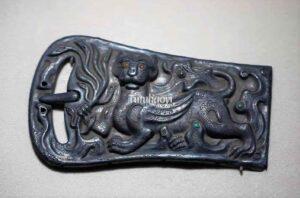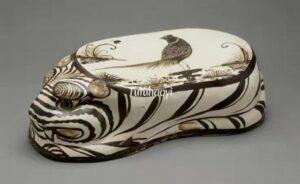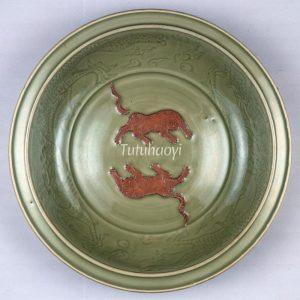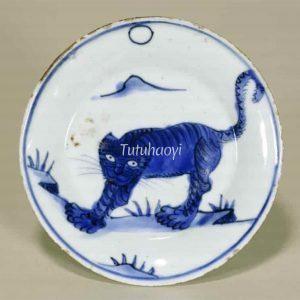Tiger
虎
© Tutuhaoyi.com owns the copyright of the description content for the images attached. Quoting all or part of the description content on this page is permitted ONLY IF ‘Tutuhaoyi.com’ is clearly acknowledged anywhere your quote is produced unless stated otherwise. (本页描述内容版权归Tutuhaoyi.com所有,转发或引用需注明 “Tutuhaoyi.com”, 侵权必究, 已注开源信息的条目除外。)
The tiger has impressed the Chinese for being ferocious, valiant, and awesome. Numerous imaginations, legends, and images have been stimulated by the fascinating impact of this majestic beast on the nation’s psyche ever since antiquity.
Shuowen jiezi (说文解字), or Explanations of Simple Graphs and Analyses of Composite Graphs, the oldest dictionary in China, finished at the beginning of the 2nd century CE, defines the tiger as the ‘lord of the beasts in the wilderness (山兽之君)’. Fengsu Tongyi (风俗通义), or Comprehensive Meaning of Customs and Mores, compiled by Ying Shao (应劭) towards the end of the 2nd century, records the contemporary custom of painting tigers on the door to ward off evil spirits in the chapter entitled ‘Sidian (祀典 i.e. Sacrificial Statutes)’. It claims, ‘The tiger is the embodiment of the yang energy and the chief of all the wild beasts (虎者,阳物,百兽之长也).’
In the Chinese zodiac, there is a twelve-year cycle of specific animals with the tiger as Number Three, which matches the third of the twelve Earthly Branch symbol 寅 yin.
Traditional decorative scenes featuring the tiger include Celestial Master Zhang (张天师) with His Personal Mount Tiger, the ‘Five Supernatural Beasts (五灵 wu ling)’, the ‘Four Directional Guardians (四灵 si ling or 四神 si shen or 四象 si xiang)’, the ‘Four Mythical Creatures (四灵 si ling)’, Li Kui (李逵) Fighting a Tiger, Monk Chou Separating Two Fighting Tigers, Tiger-Taming Lohan (伏虎罗汉), Twelve Zodiac Signs (十二生肖属相), Wu Song (武松) Slaying a Tiger, Yang Xiang (杨香) Subduing a Tiger to Rescue Her Father, etc.
The above content is written by Dr Yibin Ni. More detailed research on the motif of tiger is available in his blog here.
Fig 1: oracle bone script for the character ‘虎 hu (tiger)’, copy from the Ruins of Yin (1350-1046 BCE), the capital of the Shang dynasty
Fig 2: marble statue of a tiger, excavated from the Ruins of Yin (1350-1046 BCE), the capital of the Shang dynasty, courtesy of the National Palace Museum, Taipei
Fig 3: silver belt hook, Western Han dynasty (206 BCE- 9 CE), courtesy of Yunnan Museum, China
Fig 4: stoneware with glaze, Cizhou ware, Jin dynasty (金代 1115-1234), courtesy of The Guimet Museum, Paris
Fig 5: tiger-shaped pillow, Cizhou ware, Jin dynasty (金代 1115-1234), courtesy of Hebei Provincial Museum, China
Fig 6: Longquan celadon dish with floated relief decoration, Yuan dynasty (1271-1368), courtesy of the Percival David Foundation, The British Museum
Fig 7: porcelain plate with underglaze blue decoration, Ming dynasty (1368-1644), courtesy of Tokyo National Museum
Fig 8: jade carving, 18th-19th century, courtesy of the Metropolitan Museum of Art, New York
